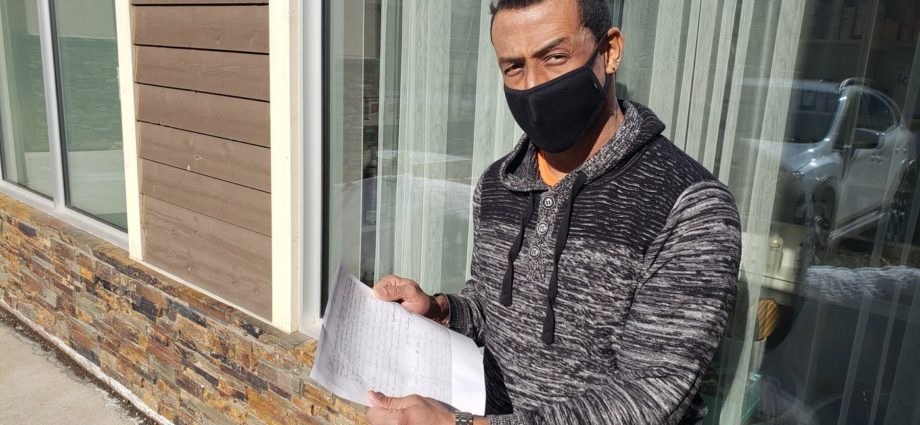Clinton Davis, a member of Black in the Maritimes, said documents compiled for the group about Black slaves being sold in New Brunswick have been unnerving to read. Clara Pasieka, Local Journalism Initiative Reporter
By Clara Pasieka, Local Journalism Initiative Reporter, Telegraph-Journal
Feb 27, 2021
“Black human beings were sold on our soil. It was in our own backyard,” said Clinton Davis, a member of Black in the Maritimes.
The organization has been working with the Provincial Archives of New Brunswick and has compiled bills of sale for Black people, and notices about Black slaves who had run away, escaping along the Petitcodiac or Saint John rivers, he said.
In one notice a Black boy named Sippeo is recorded as being sold for 15 pounds on July 8, 1797.
The archives also produced three documents related to the sale and purchase of slaves by a Charles Dixson in Westmorland County.
“It’s one thing to know slavery existed here, but it’s another thing to hold the evidence in your hands,” said Davis.
Seeing the hand-written note for a bill of sale for slaves was unnerving, giving him shivers, he said.
“Embarrassed about it or not, this needs to be known,” Davis said, adding it’s a part of Canadian history that should be widely shared.
“Descendants of these slaves might still be here. Black people deserve not to feel like outsiders. We were here,” said Davis.
Meredith J. Batt, the archivist at the Provincial Archives of New Brunswick who gathered the material for the group, said the archives have quite a collection of materials to support the history of Black people in New Brunswick. Some came as free Black loyalists, but many as servants or slaves, she said. The artifacts do not represent uncommon occurrences, she said.
“Some people prefer to believe this didn’t happen here,” she said.
Looking through the materials the group had been sent, “We felt the descriptions of runaway slaves were akin to what you might hear on a police radio,” said Davis, noting how slaves were described as “very Black” or other such characteristics.
The materials demonstrate that New Brunswick has a history of systemic racism, said Davis, something he wants to see discussed and taught in schools along with these materials.
Education Minister Dominic Cardy told the Times & Transcript he has had good meetings with groups such as Black Lives Matter Fredericton and Black Lives Matter Saint John who, along with other groups and individuals, recently called on the minister to include more Black history content in the school curriculum.
He has encouraged these groups to share materials they think would be useful to be included and is encouraging schools to add materials that arise to what they are currently teaching before the revised curriculum is developed.
When asked if there were elements in the current curriculum that directly address teaching that slavery existed in New Brunswick, Cardy said a lot of teachers have been doing this for decades, noting his own schooling in the Fredericton area included this.

Groups like Black in the Maritimes want to see this happen holistically, not ad hoc.
Cardy said many of the issues being raised would have a place in the new civics curriculum, but the timeline for when this will be completed is unclear as many resources are being tied up with keeping schools safe from COVID.
When asked if the words “history of systemic racism” will be specifically included when the curriculum is next revised, he said, “Absolutely.
Subscribe to our newsletter.
“Looking at issues of how societies exhibit, exercise power over groups within their societies, or other groups outside of their countries or civilizations, those are all absolutely part of any conversation around civics in 2021,” he said.

